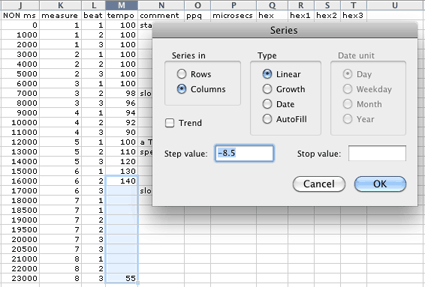Midi File Converter Smf 110

Mary Your main problem is that the WK-110 provides no direct way of exporting its preset rhythms for importation into other Casio models. On models that allow editing the preset rhythms and then saving them as User Rhythms, it is possible to bring up a preset rhythm in the editor, as though it is going to be edited, but then immediately saving it, unchanged, to a User Rhythm that can then be exported to a computer or an SD Card. Since the WK-110 does not support editing of its preset rhythms, this process is not possible. The next alternative is, using a C Chord, recording the various parts of the desired rhythm (Intro, Variations, Fills, Endings) to a Casio proprietary User Song, and then exporting that to a computer as a Standard MIDI File (SMF), and then converting that to a Casio CKF rhythm file for importation to a CTK/WK-6XXX/7XXX model, but here again, the WK-110 does not support the exportation of its Song files as Standard MIDI Files. The Standard MIDI File Converter that comes on the CD-ROM that was included with the WK-110 is for converting and importing Standard MIDI Files FROM the computer TO the WK-110, but NOT the other way FROM the WK-110 TO the computer. So, the next alternative is to use, basically, the same recording process, only recording from the WK-110 to a computer DAW/Sequencer software program as an SMF via the WK-110's USB port, but now we enter into an unknown area. The WK-110 would need to output its rhythm MIDI data to the USB port.
Not all CTK/WK models do this, and the WK-110's manual does not specify one way or the other, so you would need to experiment on that. If it does not output rhythm MIDI data to the USB port, then this method would not be an option either. Any of these methods can get quite involved, and the results quite often leave a lot to be desired, if they work at all. If you are interested in pursuing any of these, you may want to read through the following thread: This thread discusses, mainly, Yamaha to Casio rhythm conversion, but the basic process is the same. As a final resort, you could listen very closely to the various parts of the desired rhythm as you play it on the WK-110, and then recording it (one part at a time) manually in real time with the WK-7600's Pattern Sequencer and saving it as a User Rhythm.
Again, this requires a fairly in depth knowledge of rhythm file structure and pretty much necessitates being a fairly accomplished musician. If you are interested in pursuing this method, you may want to view this tutorial, by Casio's Mike Martin, on the CTK/WK-7XXX Pattern Sequencer: The caveat here is that, due to time limitations, it presents a much simplified view compared to the development of a complete, multi-part, fully instrumented rhythm. I realize that I have not presented a very encouraging scenario, but I have tried to avoid an over-simplified 'You can't get there from here!' You may be able to get there from here, but it certainly will not be easy.
Best of luck!
04 Lecture MUSC 108. Introduction to Music Technology - Fall 2013 Unit 4 Lecture Create A Standard MIDI File (SMF) This is a short example written in Sibelius 7 and exported as a SMF. Unable to play MP3 The Sibelius and Standard MIDI File versions of this file are in the course common folder. Format of a Standard MIDI File (SMF) Hex View Of 04Classexample Use TextWrangler's Hex Dump command in the File menu Legend MThd is SMF Header Marker MTrk is Track Header Marker Number of bytes to follow FF2F00 is End of Track Marker Use the hexdump tool in Terminal Copy the 04ClassExamople60bpm.mid file from the Course Common folder to the iMac desktop.
Midi File Converter Smf 110 To 5
Execute these commands in the terminal. Hold down the Option key and select the data shown in grey. Paste back into a new TextWrangler window. Organize into track events. Convert Spaces to Tabs Use grep to convert a space to a tab.
Paste into Excel 7. Change delta times to PPQ values These are the delta times used in the MIDI file. Delta Times PPQ 81 70 240 83 60 480 87 40 960 Optional: Here's how to figure out what 81 70 means. This example is specific to two byte delta times.

Aren't you glad you don't have to do this! Play in Track 2 in MIDIDisplay Track two should be in this form. Delete rows 14, 15, 22, and 41. Use the Excel DEC2HEX command to convert all hexadecimal numbers in data1 and data2 columns to decimal. Left column used this Excel formula: =HEX2DEC( C14 ) Right column used this Excel formula: =HEX2DEC( D14 ) Paste Special by Values to replace data1 and data2 hex values with decimal values. Copy data into MIDIDisplay. Set the Time Base to PPQ.
Set the PPQ value to 480. The debugSMF Tool debugSMF is a MIDI tool I wrote to help you find errors in your standard MIDI file. Execute this command in Terminal. Formatted with tabs for display in Excel: Header: Format: 1 Tracks: 3 PPQ Division: 480 Start of Track 1 Time signature: 4/2/24/8 Key signature: 2, 0 Tempo: f42 M.M.